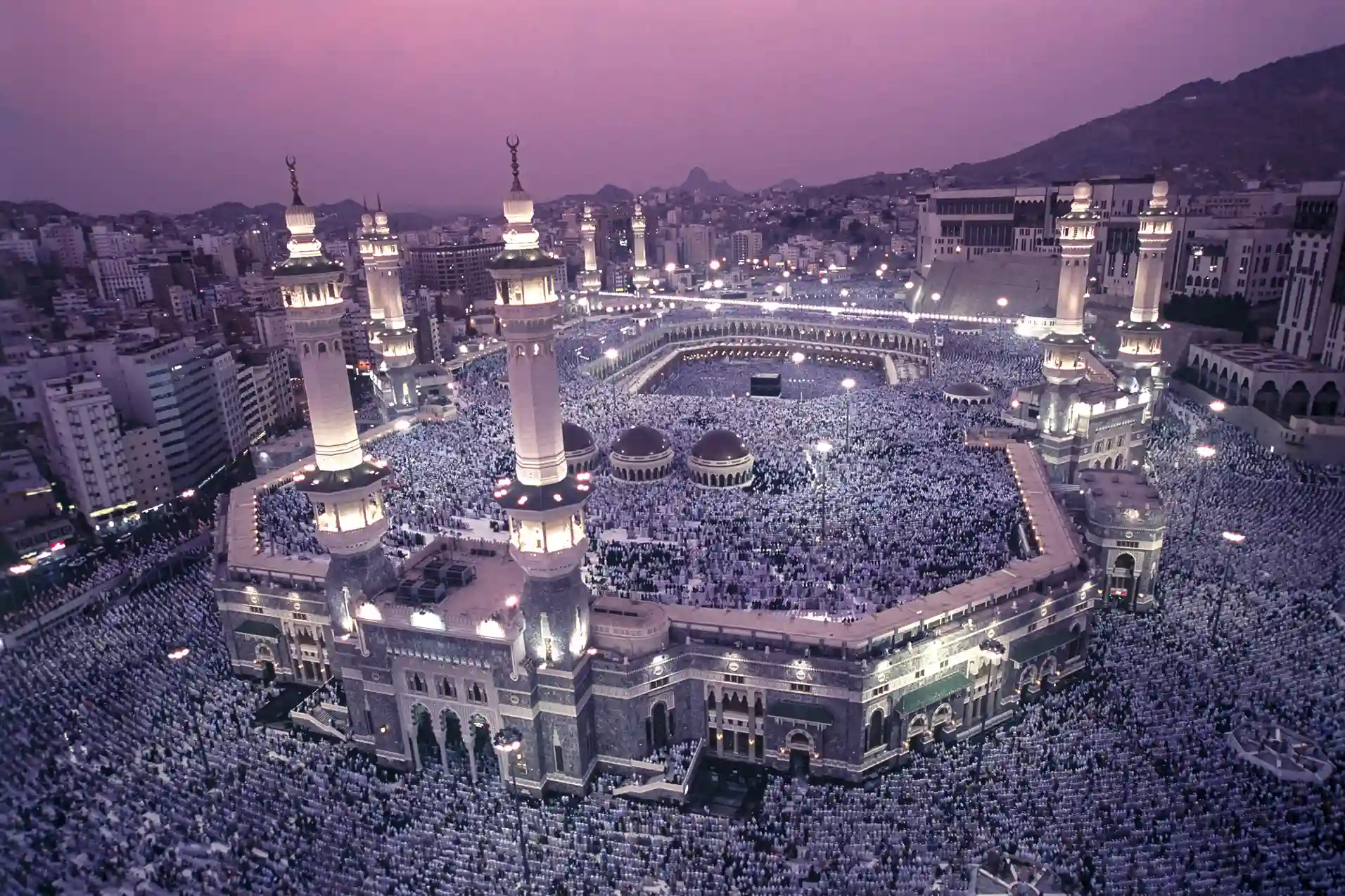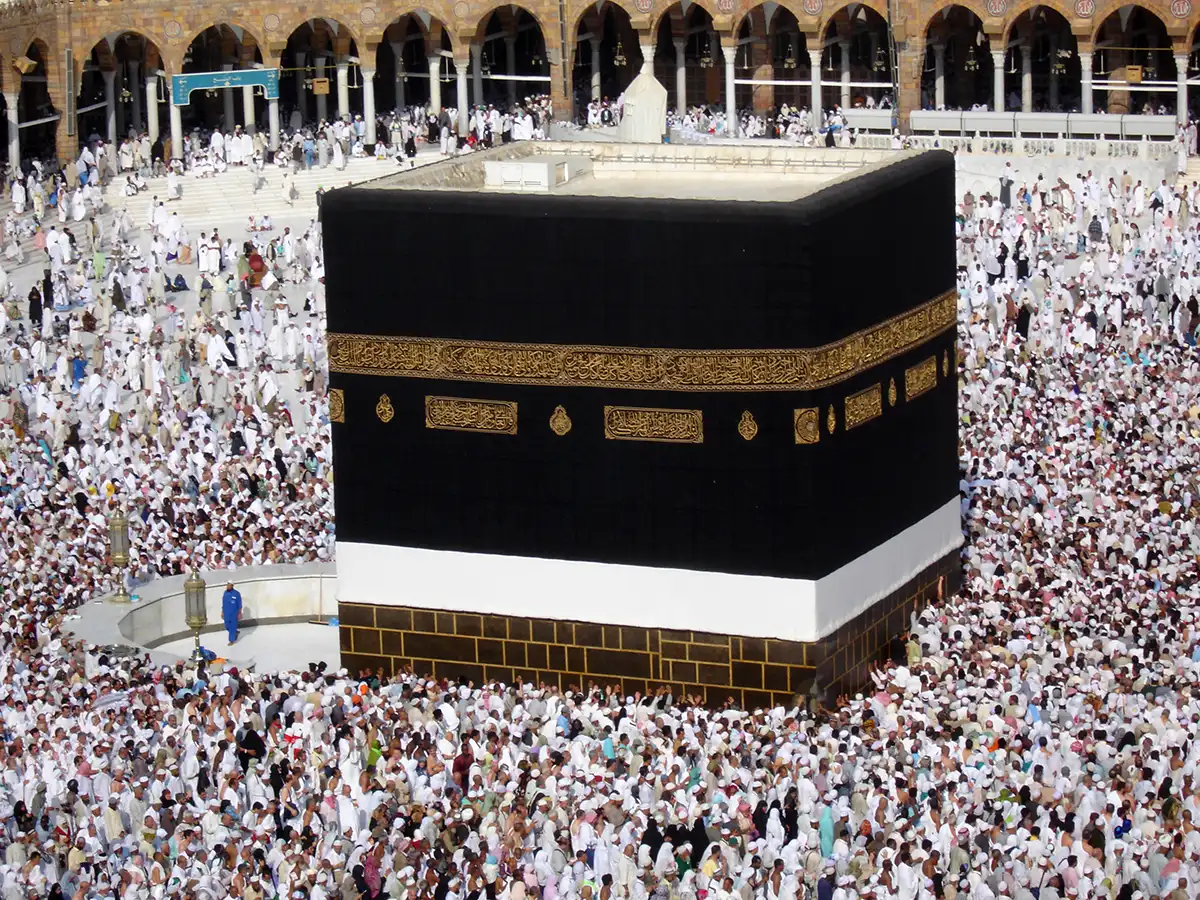Sacred Sites of Saudi Arabia
Al-Baqi', Medina
Al-Baqi' is a significant cemetery located in Medina, near the Prophet's Mosque. It is the burial place of many prominent figures in Islamic history, including members of the Prophet Muhammad's family, his companions, and other notable Muslims. Visiting Al-Baqi' is a tradition for many pilgrims who come to Medina, offering prayers and paying respects to those buried there. The cemetery is a place of solemn reflection and historical significance.
Grave of Lady Hawa (Eve), Jeddah
The Grave of Lady Hawa (Eve) in Jeddah is a site of historical and religious interest. While its authenticity is debated, it is traditionally believed to be the burial place of Eve, the mother of humankind in Abrahamic religions. The site, though often unmarked, attracts visitors who wish to connect with the ancient history of the region. It holds cultural significance and represents the shared heritage of various faiths.
Hamza ibn Abdul-Muttalib, Medina
Hamza ibn Abdul-Muttalib, the Prophet Muhammad's uncle, is buried in Medina. He was a revered warrior and a martyr in the Battle of Uhud. His grave is located near Mount Uhud and is visited by pilgrims who honor his bravery and sacrifice. The site is a reminder of the early struggles of the Muslim community and the importance of faith and courage.
Jabal al Lawz
Jabal al Lawz, or Mount Almond, is a mountain in northwestern Saudi Arabia. Some researchers propose that it may be the real Mount Sinai mentioned in the Bible. This theory is controversial and not widely accepted by mainstream scholars. However, the mountain's rugged terrain and ancient petroglyphs attract explorers and those interested in biblical archaeology. The site is shrouded in mystery and debate.
Jabal al Nour, Mecca
Jabal al Nour, or the Mountain of Light, is a mountain near Mecca famous for the Cave of Hira. It is in this cave that the Prophet Muhammad received his first revelations from God through the Angel Gabriel. The site is a significant pilgrimage destination, offering visitors a chance to reflect on the beginning of Islam. The challenging climb and the spiritual atmosphere make it a memorable experience.
Masjid al Hudaibiyah, Mecca
Masjid al Hudaibiyah, located outside Mecca, marks the site of the Treaty of Hudaybiyah, a crucial event in Islamic history. This treaty, signed between the Prophet Muhammad and the Meccan leaders, paved the way for the peaceful spread of Islam. The mosque serves as a reminder of this important historical moment and is visited by pilgrims who seek to learn about the early days of Islam.
Masjid al Qiblatayn, Medina
Masjid al Qiblatayn, or the Mosque of the Two Qiblas, is located in Medina. It is significant because it is the mosque where the direction of prayer (qibla) was changed from Jerusalem to Mecca during prayer. The mosque is a historical landmark and a place of worship for Muslims, symbolizing the unity of the Muslim community under one qibla.
Masjid Nimrah, Mecca
Masjid Nimrah is a mosque located in the Arafat plains near Mecca. It is here that the Imam delivers the sermon on the Day of Arafat during the Hajj pilgrimage. The mosque is a crucial part of the Hajj rituals, accommodating thousands of pilgrims who gather to listen to the sermon and offer prayers. Its size and importance make it a central point during the pilgrimage.
Masjid Quba, Medina
Masjid Quba is the first mosque built in Islam, located in Medina. It was constructed by the Prophet Muhammad and his companions upon their arrival from Mecca. Visiting Masjid Quba is considered a highly rewarding act, and many pilgrims make it a point to pray there. The mosque's historical significance and its beautiful architecture make it a cherished site.
Mecca
Mecca is the holiest city in Islam and the central pilgrimage destination for Muslims worldwide. It is the birthplace of the Prophet Muhammad and the location of the Kaaba, the most sacred shrine in Islam. Millions of Muslims perform the Hajj and Umrah pilgrimages to Mecca each year, fulfilling a fundamental pillar of their faith. The city's spiritual significance and historical importance are unparalleled.
Medina
Medina, the second holiest city in Islam, is where the Prophet Muhammad migrated after leaving Mecca. It is home to the Prophet's Mosque, which houses his tomb. Medina is a city of peace and tranquility, attracting millions of pilgrims who come to pray in the Prophet's Mosque and visit other historical sites. The city's spiritual atmosphere and historical significance make it a vital destination for Muslims.
Mt. Arafat, Mecca
Mount Arafat, located near Mecca, is a crucial part of the Hajj pilgrimage. It is here that pilgrims gather on the ninth day of Dhul Hijjah to stand in prayer from noon to sunset, seeking forgiveness from God. The Day of Arafat is considered the pinnacle of the Hajj, and the plains of Arafat become a sea of white as millions of pilgrims gather. The site's spiritual significance and the collective prayer make it a profound experience.
Rajajil Columns
The Rajajil Columns, located near Sakaka in the Al-Jawf region, are a mysterious archaeological site consisting of standing stones. The purpose and origin of these columns remain unknown, leading to various theories and speculations. While not a religious site in the traditional sense, the columns hold cultural and historical significance, attracting archaeologists and those interested in ancient mysteries. The site's enigmatic nature adds to its allure.

Martin Gray is a cultural anthropologist, writer and photographer specializing in the study of pilgrimage traditions and sacred sites around the world. During a 40 year period he has visited more than 2000 pilgrimage places in 160 countries. The World Pilgrimage Guide at sacredsites.com is the most comprehensive source of information on this subject.


